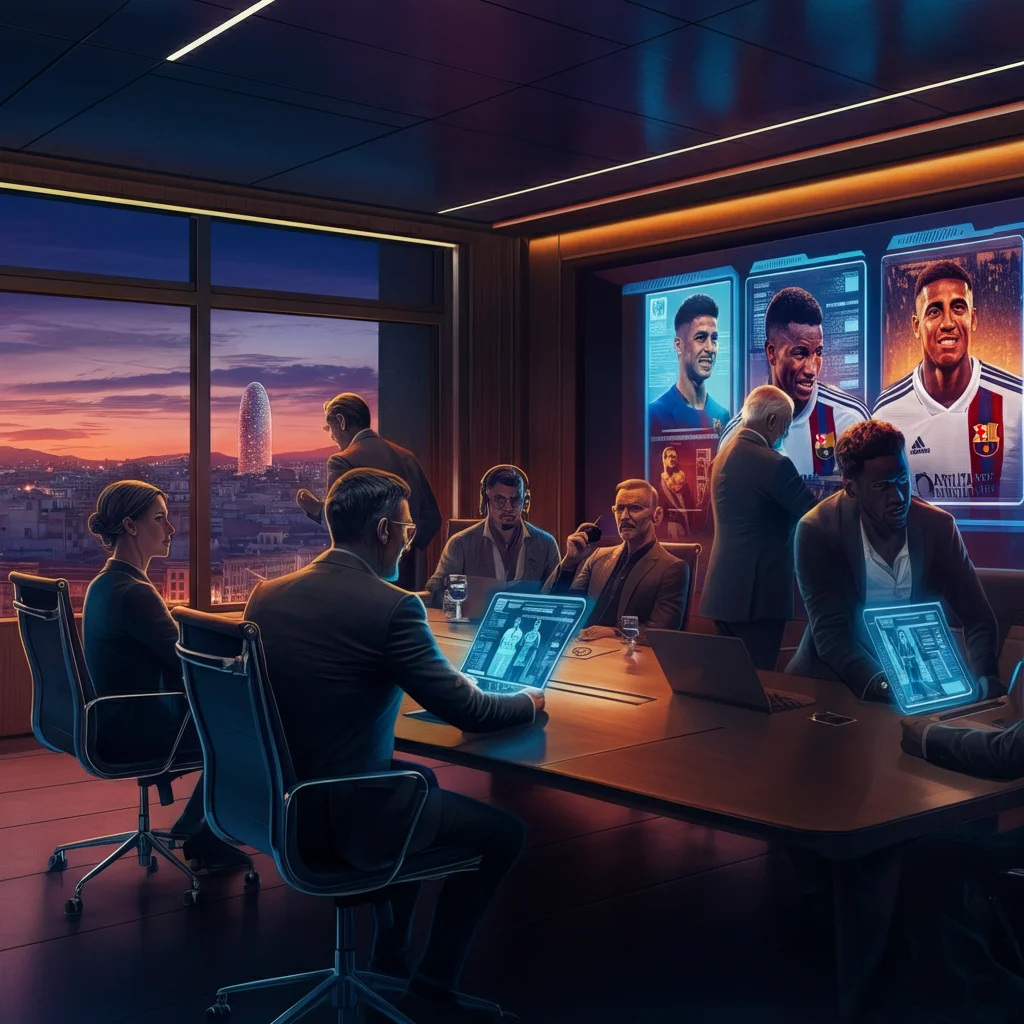FC Barcelona is no stranger to challenges, both on and off the pitch. The club, synonymous with footballing excellence, has faced severe financial constraints in recent years, forcing them to rethink their approach to building a competitive squad. Amid salary cap restrictions, mounting debts, and limited budgets, Barcelona appears to be doubling down on a cost-saving strategy for 2025: maximizing free transfers.
But why are free transfers becoming such a critical focal point for one of Europe’s most decorated football clubs? This blog will explore the economic factors driving this approach, examine Barcelona’s past success with free signings, discuss possible targets for 2025, and evaluate whether this strategy works for maintaining long-term competitiveness. Strap in, culés, because the future of FC Barcelona is being built on ingenuity rather than overspending.
Understanding the Economic Factors Behind Free Transfers
To understand why Barcelona is focusing on free transfers, we need to dig into the club’s financial reality.
Salary Cap Rules
La Liga enforces some of the strictest financial regulations in Europe, including salary caps tied to a club's revenue. For Barcelona, whose revenue was disrupted by the COVID-19 pandemic and past overspending, these restrictions severely limit their capacity to spend big in transfer windows. According to reports, Barcelona had to offload high-earning players and renegotiate contracts to comply with these rules. The salary cap leaves little room for the splashy signings of yesteryears.
Debt Management
Barcelona's financial struggles are well-documented. Recent reports estimate their debt at around €1 billion. While the club has implemented measures like the controversial sale of future TV rights and other assets, this level of debt has forced the board to adopt a frugal mindset. Big-money transfers now take a backseat to strategic, cost-efficient alternatives.
Budget Limits
Even with revenue generation initiatives such as partnerships, streaming ventures, and sponsorship deals, rigid budget limits hinder the club’s ability to compete financially with clubs backed by oil-rich owners or American investment groups. Free transfers provide a way to acquire quality players without contributing to the upfront transfer fee expenditure.
A Proven Strategy: Success with Free Transfers
Barcelona isn’t stepping into uncharted territory with free transfers. The club has already seen positive outcomes in recent years from this approach.
Robert Lewandowski
Though not technically a free transfer (a relatively modest €45 million fee was involved), Lewandowski’s quest to join Barcelona on reduced earnings exemplified a mix of financial ingenuity and player commitment. His impact was immediate and immense, leading Barcelona to La Liga glory while proving the importance of carefully negotiated deals.
Ilkay Gündogan and Andreas Christensen
More aggressively pursuing free transfers paid off with the signings of Gündogan and Christensen. After arriving on a free from Manchester City, Gündogan brought experienced, world-class talent to Barça’s midfield. Meanwhile, Christensen’s rock-solid defensive abilities, acquired without a transfer fee from Chelsea, became an unsung asset to the squad. Both proved that free signings could still deliver elite value on the pitch.
Memphis Depay (Partially Successful)
While Depay’s stint at Barcelona wasn’t as impactful as hoped, he’s another example of how the club was willing to mitigate risk by investing more cautiously in free agents.
These examples underline that talent isn’t always tethered to hefty fees, and Barcelona has shown they can capitalize on quality players available on a free.
Potential Free Agents in 2025
Looking ahead to 2025, the market for free agents offers intriguing opportunities. Here are some positions Barcelona may be targeting and players worth monitoring:
Center-Forward
With Lewandowski approaching the twilight of his career, finding a successor will be essential. Players such as Victor Osimhen (if available as a free agent) or Youssoufa Moukoko could provide youth and dynamism at the top of the pitch.
Defensive Reinforcements
Barcelona may look to refresh their backline. Players like Aymeric Laporte or Theo Hernandez becoming free agents could provide both quality and leadership to the defense.
Midfield Creativity and Depth
The departure of club legends like Busquets has left gaps in the midfield. A player like Bernardo Silva (whose name often circulates in transfer rumors) could bring technical mastery without costing a fortune in fees.
Wingers and Wide Attackers
With Dembele gone and Fati’s inconsistency, injecting wide attacking power is crucial. Free agents like Leroy Sané or Federico Chiesa (if availability aligns) could interest the Catalan management.
Barcelona’s ability to attract these players often comes down to timing, negotiation, and the allure of donning Blaugrana colors.
Risks and Rewards of Free Transfers
While the strategy of targeting free transfers seems like a no-brainer given Barcelona’s current realities, it comes with both risks and rewards.
The Rewards
Economic Efficiency
Free transfers eliminate hefty transfer fees, allowing the club to allocate more budget toward salaries or other important expenses.
Veteran Impact
Players like Gündogan have shown that veterans arriving on a free can make an immediate impact while mentoring younger stars.
Lower Downside
Signing a player without paying a transfer fee reduces the financial risk if the move doesn’t work out.
The Risks
Player Motivation
Some critics argue that players signing on free transfers may lack the motivation compared to those involved in high-profile, big-money moves.
Limited Availability
The pool of high-quality free transfers is smaller, and competition among clubs for top-tier options can be fierce.
Wage Demands
While avoiding transfer fees helps financially, free agents often demand higher wages or signing bonuses, which could still strain the budget.
Weighing these risks and rewards will be crucial for Barcelona as they pursue this strategy.
Long-Term Vision and Rebuilding Barcelona’s Future
The emphasis on free transfers isn’t just about managing short-term finances; it also forms part of a broader strategic vision for rebuilding Barcelona’s future. President Joan Laporta’s administration seems intent on combining pragmatic financial management with a return to Barça’s core philosophy of youth development and possession-based football.
La Masia graduates like Lamine Yamal and Gavi signal a return to developing world-class talent in-house. Blending these young stars with astutely chosen free agents creates a cost-effective way to remain competitive while future-proofing the squad.
By using free transfers strategically and combining them with the development of academy talents, Barcelona could craft a sustainable model that balances competitiveness with financial health. This model might not only secure immediate results but also rebuild trust with fans disillusioned by recent financial mismanagement.
Will Free Transfers Keep Barcelona Competitive?
Only time will tell if Barcelona’s focus on free transfers can sustain their competitive success in the long term. The strategy depends heavily on proper scouting, well-negotiated contracts, and the ability to attract top-tier players despite fierce competition.
However, if recent successes in the transfer market are any indication, Barcelona might just prove that great teams aren’t solely built on lavish spending but by making smart, calculated, and visionary choices.
For fans, the hope remains that these measures will pave the way for Barcelona to not only thrive financially but also continue to inspire the football world with their unique style of play.



